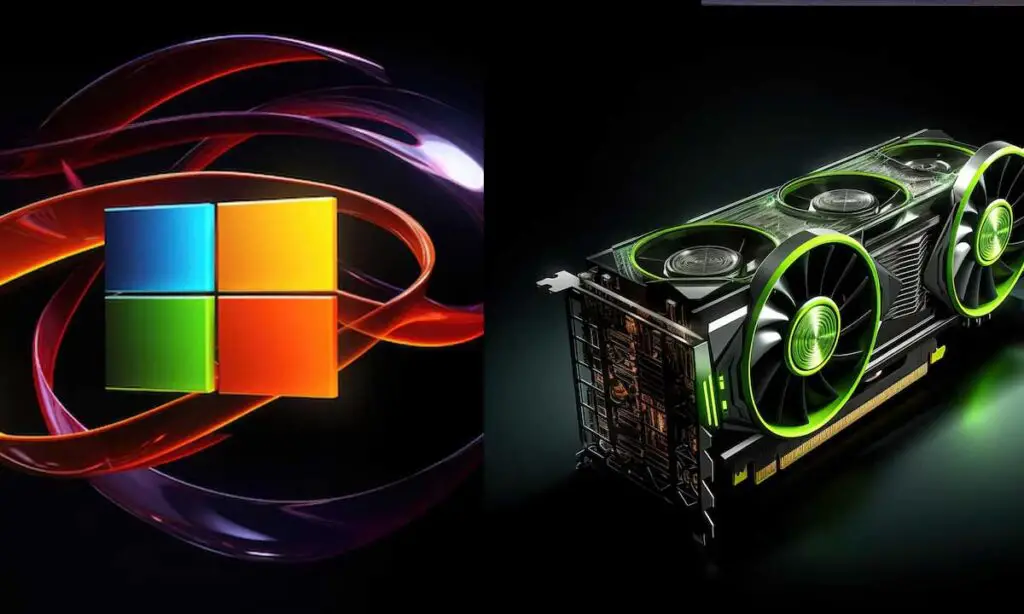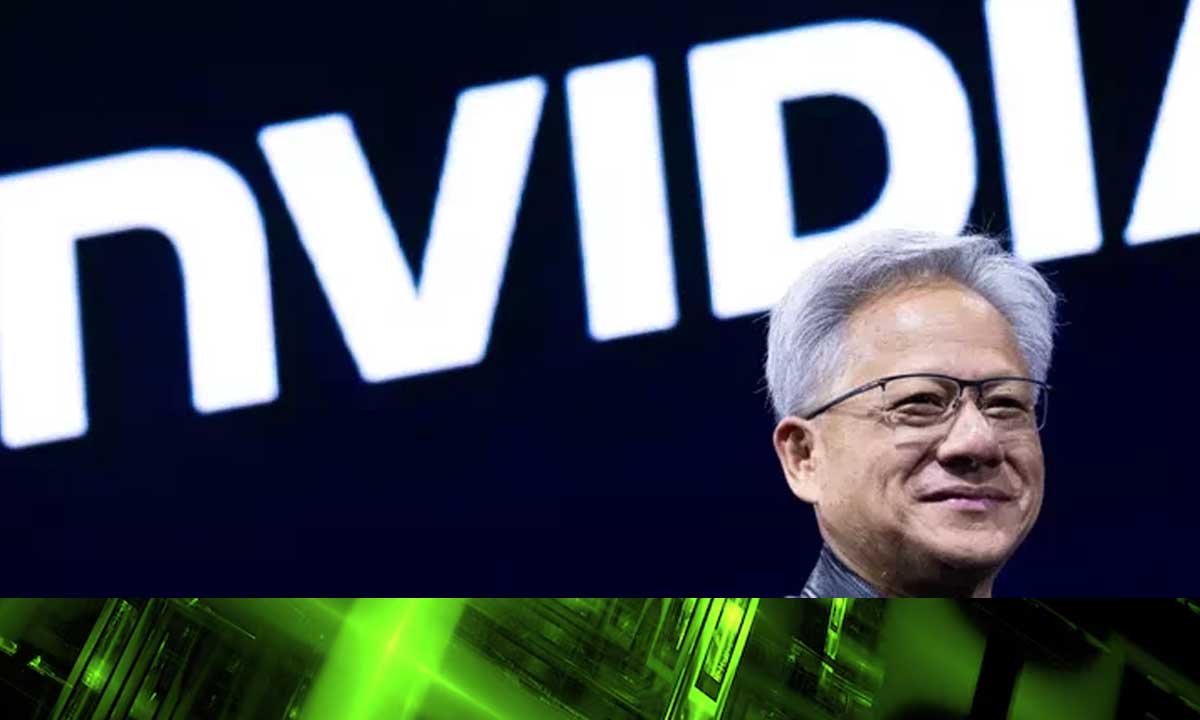Nvidia Briefly Becomes World’s Most Valuable Company, Surpassing Microsoft Amid AI Market Surge
In a historic moment that underscores the rapid growth of artificial intelligence (AI) and its impact on global markets, Nvidia briefly surpassed Microsoft on May 23, 2025, to become the most valuable company in the world. Following a stellar first-quarter earnings report, Nvidia’s stock surged over 6% in pre-market trading, lifting its market capitalization to a jaw-dropping $3.49 trillion—momentarily placing it ahead of both Microsoft and Apple.
Although Nvidia ended the trading day slightly behind Microsoft, the event is a clear signal of how AI is reshaping the tech industry and redefining investor priorities. This fleeting but monumental moment is more than just a numerical achievement—it’s a declaration that Nvidia is at the heart of the AI revolution.
Record-Breaking Earnings Power Nvidia’s Rise
The catalyst behind Nvidia’s climb was its blowout earnings report for the first quarter of fiscal year 2026, released after markets closed on May 22. The company posted record revenues, far exceeding Wall Street expectations. A major driver of these results was the unrelenting demand for its high-performance AI and data center chips, especially the powerful H100 and B100 GPUs.
Nvidia’s chips are now considered the backbone of modern AI applications, powering everything from cloud computing platforms and self-driving technology to generative AI models like OpenAI’s ChatGPT. The earnings beat reinforced Nvidia’s leadership in this domain and highlighted AI’s continued momentum across virtually every sector.
AI as a Long-Term Growth Engine
The explosive demand for AI infrastructure has solidified Nvidia’s reputation as more than just a chipmaker—it is now a cornerstone of the AI economy. Analysts and investors agree that AI is not a passing trend, but a fundamental transformation that is still in its early stages. This view is increasingly mirrored in Nvidia’s skyrocketing valuation and investor enthusiasm.
Unlike previous tech booms, which were often cyclical or product-specific, the AI revolution is structural and far-reaching. It’s affecting healthcare, finance, manufacturing, defense, and consumer tech—sectors all vying for Nvidia’s advanced chips to stay competitive. This widespread adoption reinforces the company’s long-term growth prospects.
Nvidia Joins the $3 Trillion Club
Nvidia’s brief rise to the top places it in an elite club of tech behemoths that have crossed the $3 trillion valuation mark. Here’s a look at the timeline of this milestone:
- Apple became the first to cross $3 trillion in June 2023.
- Microsoft followed in January 2024.
- Nvidia reached $3 trillion for the first time in mid-2024 and again in early 2025.
- On May 23, 2025, Nvidia briefly took the lead with a $3.49 trillion market cap before ending the day slightly behind Microsoft at $3.41 trillion.
This dynamic rivalry among the three tech titans—Apple, Microsoft, and Nvidia—illustrates the shifting nature of investor confidence. While Apple has traditionally dominated with its consumer hardware ecosystem and Microsoft through its software and cloud offerings, Nvidia’s edge now lies in powering the very foundation of the future: artificial intelligence.
The Rise of After-Hours Trading: A New Market Reality
A significant portion of Nvidia’s gains occurred outside of standard trading hours. Between March 2024 and February 2025, 82% of Nvidia’s market gains took place in after-hours or pre-market sessions. This trend indicates a growing preference among institutional investors to react to breaking news and earnings reports beyond the confines of traditional trading windows.
Retail investors, however, often lack the tools to trade outside regular hours, leaving them at a disadvantage. Contract-for-difference (CFD) providers like Pepperstone are stepping in to fill this gap, offering 24-hour access to U.S. equities such as Nvidia. As AI and tech news increasingly break around the clock, access to extended trading could become essential for anyone hoping to capitalize on market moves.
Microsoft Maintains the Lead—For Now
Despite Nvidia’s brief ascent, Microsoft retained its position as the world’s most valuable company by the end of the trading day. Its closing market cap stood at $3.41 trillion, narrowly edging out Nvidia’s $3.39 trillion.
Microsoft remains a dominant force, thanks to its extensive software ecosystem, enterprise dominance, and leadership in cloud computing through Azure. Additionally, its strategic partnership with OpenAI has helped integrate AI features across Microsoft Office, Bing, and Teams, cementing its position in the AI conversation.
However, the competition is tightening. Nvidia’s stock has increased roughly 5% year-to-date, while Microsoft has posted a 9% gain. But with the AI narrative driving global headlines and institutional investments, Nvidia could reclaim the top spot soon, especially if it continues to beat expectations.
Apple’s Struggles in 2025
While Nvidia and Microsoft battle for the crown, Apple is facing significant challenges. Its shares have dropped around 20% since January 2025, largely due to geopolitical tensions and policy shifts.
The re-election of President Donald Trump has brought renewed trade restrictions, including steep tariffs on Chinese imports. Apple, which relies heavily on China for manufacturing, has felt the impact acutely. These policies have disrupted Apple’s supply chain and cast uncertainty over its production capacity.
Investors are increasingly concerned about Apple’s ability to diversify its manufacturing operations. Although efforts are underway to shift some production to India and Vietnam, these transitions are costly and slow, putting Apple at a disadvantage in the near term.
The Path to $4 Trillion: Can Nvidia Get There?
Nvidia’s all-time high valuation of $3.66 trillion, reached in January 2025, is now within striking distance. Some analysts believe the company could break the $4 trillion barrier within the next 12 months if the AI boom continues at its current pace.
Key growth drivers that could help Nvidia reach this milestone include:
- AI Chip Dominance: Continued leadership in producing AI training and inference chips, particularly the highly sought-after H100 and B100 models.
- Edge Computing Expansion: Nvidia is making strategic moves into edge computing, enabling AI to be deployed in autonomous systems, IoT devices, and smart cities.
- Global Partnerships: Collaborations with top cloud providers, governments, and research institutions enhance Nvidia’s reach and relevance.
- Sustainable Innovation: Development of energy-efficient chips to mitigate the massive power requirements of AI data centers is a growing focus.
- Software Ecosystem: Beyond hardware, Nvidia is investing heavily in CUDA and other software platforms to build a complete AI development environment.
Risks and Headwinds
Despite its upward trajectory, Nvidia is not without risks. Several factors could derail its momentum, including:
- Regulatory Scrutiny: Increased global scrutiny on monopolistic practices and chip exports could limit Nvidia’s growth in certain markets.
- Rising Competition: AMD and Intel are ramping up their AI chip capabilities, introducing new architectures aimed at breaking Nvidia’s stronghold.
- Macroeconomic Conditions: Inflation, interest rate hikes, and global economic slowdowns could negatively affect corporate spending on AI infrastructure.
- Supply Chain Challenges: Though less exposed than Apple, Nvidia still faces semiconductor manufacturing bottlenecks that could impact delivery timelines.
What Nvidia’s Rise Means for the Broader Tech Industry
Nvidia’s brief ascension to the top is symbolic of a broader shift in how value is assigned in the tech world. The focus is moving from consumer devices and traditional software to AI infrastructure, machine learning models, and computational power.
This shift suggests that the next generation of tech leadership will come not from who builds the best smartphone or productivity app—but from who enables the intelligence behind everything from robotics and diagnostics to smart cities and synthetic content.
In this new paradigm, Nvidia has emerged as a linchpin, providing the tools that power a growing number of AI-driven innovations.

📈 NVIDIA (NVDA) Stock Performance
NVIDIA’s stock is currently trading at $135.13, experiencing a 2.9% decline from the previous close. The day’s trading range has been between $132.97 and $139.55, with an opening price of $138.80. The trading volume stands at approximately 333 million shares, indicating significant market activity.Yahoo Finance+4MarketWatch+4TradingView+4
Despite the recent dip, NVIDIA’s stock has shown remarkable growth over the past year, driven by its leadership in AI and graphics processing technologies. The company’s market capitalization has reached $3.3 trillion, positioning it as one of the most valuable companies globally.
🧠 Microsoft (MSFT) Stock Performance / Microsoft Share Price
Microsoft’s stock is currently priced at $460.36, marking a modest 0.2% increase from the previous close. The stock’s intraday range has been between $455.58 and $461.67, with an opening price of $460.00. The trading volume is approximately 34.8 million shares.Google+1TradingView+1
Microsoft’s market capitalization stands at $2.79 trillion, underscoring its significant presence in the technology sector. The company’s consistent performance is attributed to its diversified portfolio, including cloud computing, productivity software, and AI initiatives.
🏆 Market Capitalization Comparison
| Company | Market Cap (USD) | Stock Price (USD) | Daily Change |
|---|---|---|---|
| NVIDIA | $3.3 Trillion | $135.13 | -2.9% |
| Microsoft | $2.79 Trillion | $460.36 | +0.2% |
NVIDIA’s recent surge in market capitalization, surpassing Microsoft, highlights the growing investor confidence in AI and related technologies. However, both companies continue to be pivotal players in the tech industry, each with its unique strengths and strategic initiatives.
🔍 Investment Insights
- NVIDIA: The company’s focus on AI and graphics processing has positioned it at the forefront of technological innovation. Investors are optimistic about NVIDIA’s potential to lead in the AI-driven future.
- Microsoft: With a robust portfolio spanning cloud services, software, and AI, Microsoft offers stability and consistent growth prospects. Its strategic investments in AI and cloud computing continue to drive its market performance.
Both NVIDIA and Microsoft exemplify the dynamic nature of the technology sector, with their stock performances reflecting broader trends in AI and digital transformation. Investors should consider their individual investment goals and risk tolerance when evaluating opportunities in these leading tech companies.
Final Thoughts: A Changing of the Guard?
Nvidia’s rapid rise to near the top of the tech world’s valuation rankings underscores the seismic shift being driven by artificial intelligence. Although the company briefly claimed the number-one spot, it’s becoming increasingly clear that it could hold it more permanently in the near future.
For now, Microsoft remains in pole position, with a diversified portfolio and strong financial performance. But Nvidia’s singular focus and success in AI make it a formidable contender—perhaps even the company best positioned to lead the next era of technological transformation.
As the race for AI dominance continues, the companies best able to adapt, innovate, and provide scalable solutions will shape not only the stock market but the very future of how we live, work, and interact with technology.

